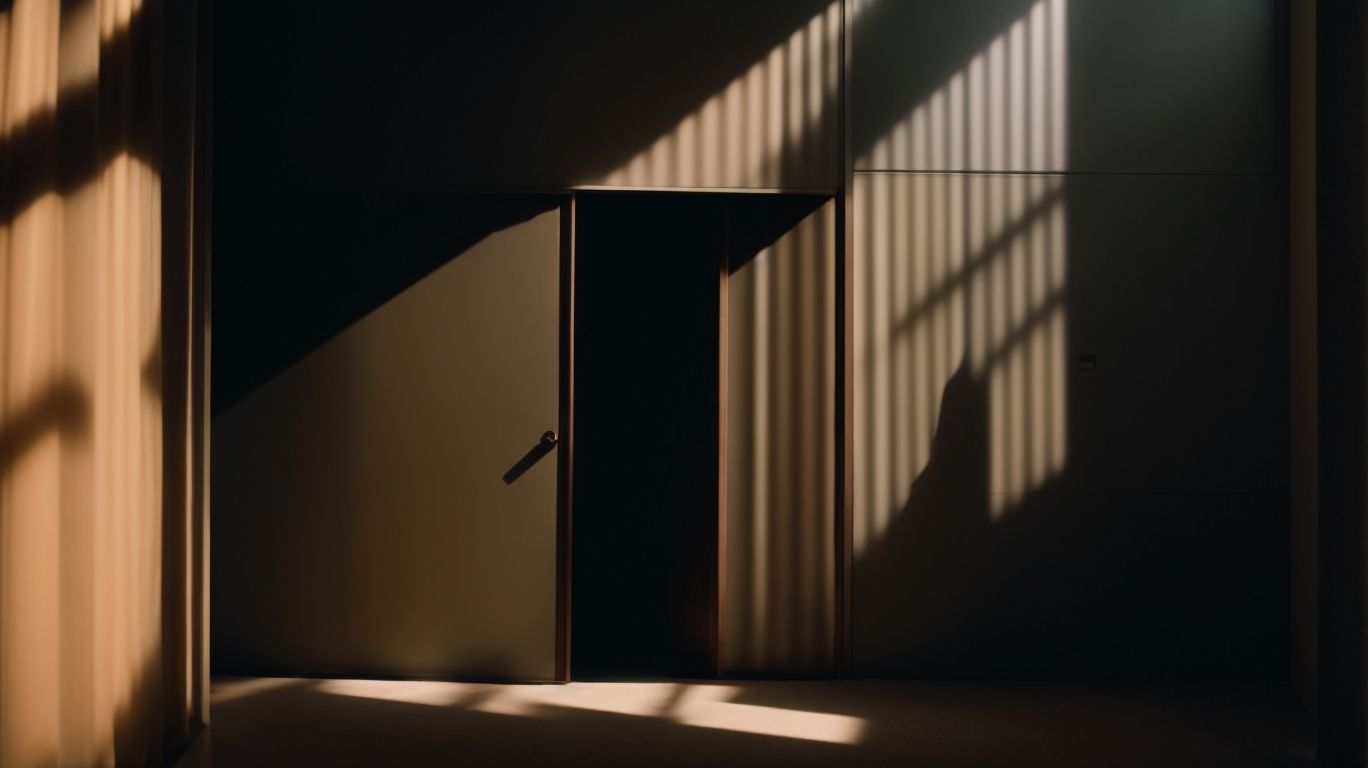Have you ever stopped to consider the profound impact that light and shadow can have on our perception, emotions, and overall well-being?
In this article, we will explore the intricate relationship between light and shadow and delve into how they influence our psychology. From the different types of light and shadow to their effects on our mood and memories, we will uncover the fascinating ways in which they shape our experiences.
Join us on a journey to understand the power of light and shadow in therapy, as well as how we can navigate the potential negative effects to find a balance that promotes mental health and harmony in our lives.
Contents
- 1 What is Light and Shadow?
- 2 The Role of Light and Shadow in Psychology
- 3 The Impact of Light and Shadow on Our Emotions
- 4 The Use of Light and Shadow in Therapy
- 5 The Dark Side of Light and Shadow
- 6 Embracing the Balance of Light and Shadow
- 7 Frequently Asked Questions
- 7.1 What are the psychological implications of light and shadow?
- 7.2 How does light affect our psychological state?
- 7.3 What are the potential psychological effects of living in a dark environment?
- 7.4 Can shadows affect our perception of reality?
- 7.5 Are there any positive psychological implications of shadows?
- 7.6 How can understanding light and shadow benefit our mental health?
What is Light and Shadow?
Light and shadow play a fundamental role in the visual perception of our surroundings, shaping the physicality of spaces and creating unique forms that define architectural environments.
The cyclical dance of light throughout the day transforms ordinary structures into works of art, emphasizing textures, volumes, and contours. Shadows cast by the interplay of sunlight and architectural elements introduce depth and dimension, enhancing the spatial experience for inhabitants and visitors alike. Architects often harness the power of light to not only illuminate spaces but also to sculpt and manipulate the perception of specific design elements, amplifying contrast and highlighting key features within a building. This dynamic relationship between light and shadow constantly evolves, influencing how we navigate and feel within built environments.
The Role of Light and Shadow in Psychology
Light and shadow have profound implications on psychology, affecting the human brain’s circadian rhythm, mood regulation, and perceptual dichotomies between lightness and darkness.
The interplay between light and shadow is fundamental to shaping our psychological experiences and responses. Light exposure influences the body’s internal clock, or circadian rhythm, impacting sleep patterns, hormone release, and overall alertness. Conversely, shadow can evoke feelings of mystery, fear, or tranquility, influencing our emotional state and cognitive processes. The contrast between brightness and darkness plays a pivotal role in mood modulation, as the brain interprets these visual cues and adjusts neurotransmitter levels accordingly.
How Do Light and Shadow Affect Our Perception?
The interplay of light and shadow significantly influences our perception of architectural space, evoking emotional responses at various levels through the balance and features of shadows and spaces.
Light can transform a mundane room into a captivating sanctuary, casting intriguing patterns that dance across walls and floors. The strategic placement of windows and openings allows natural light to sculpt the space, creating a dynamic environment that evolves throughout the day.
Conversely, shadows add depth and mystery, enveloping corners in a cloak of darkness that invites exploration and contemplation. The play of light and shadow not only enhances the aesthetic appeal of a structure but also shapes its mood and character, offering a narrative that engages the senses and stimulates the imagination.
What Are the Different Types of Light and Shadow?
Light and shadow manifest in a myriad of forms, playing with rhythm, color, textures, depth, and movement to create dynamic visual experiences that captivate the observer.
Light can cast sharp, defined shadows that enhance shape and form, while soft light can create gentle, gradual transitions between light and dark, adding a sense of subtlety to the scene.
Direct sunlight brings bold contrasts and vivid hues, while diffused light bathes subjects in a soft, even glow, reducing harsh shadows. The interplay of light and shadow on various surfaces can reveal intricate details, textures, and patterns, adding a layer of complexity that draws the eye.
Movement alters the direction and intensity of light, continuously reshaping the visual landscape and captivating the viewer’s perception.
The Impact of Light and Shadow on Our Emotions
Light and shadow wield a profound influence on our emotional experiences, as they interact within architectural spaces to create a delicate balance between serenity and dynamism.
In architectural design, the strategic manipulation of light not only illuminates physical structures but also shapes the mood of a space. The interplay between light and shadow heightens the perception of depth and dimension, adding layers of complexity to the environment. Shadows cast by architectural elements can evoke a sense of mystery and drama, drawing the viewer’s gaze in unexpected directions. This dynamic relationship between light and shadow transforms static structures into living, breathing spaces that continuously evolve throughout the day.
How Does Light and Shadow Influence Our Mood?
Light and shadow directly influence our mood, shaping our experiences through design choices, balance in nature, textures, and the evocation of spatial memories that resonate within us.
When considering light in design, the intensity and direction of light can create a sense of warmth or coolness in a space. Shadows, on the other hand, add depth and mystery, playing with perception and enhancing the visual interest. In nature, the interplay of light and shadow is a harmonious dance, calming our senses and connecting us to the rhythm of the natural world.
The incorporation of different textures in a design can elicit varied emotional responses. Smooth surfaces may evoke a sense of calm and serenity, while rough textures can stimulate energy and excitement. Our perception of space is deeply intertwined with memory, as certain environments can trigger nostalgia or a feeling of familiarity.
Can Light and Shadow Trigger Memories and Associations?
Light and shadow possess a unique ability to trigger memories and associations, engaging in a dance of play and movement within architectural spaces that resonate with our deep-seated experiences.
Light, in its various intensities, creates a canvas that shifts and changes, casting a spectrum of emotions upon the walls and floors of a space. This interplay with shadow adds depth and dimension, inviting reflection and contemplation as one moves through the chiaroscuro landscape. Whether it’s the sharp contrast of a sunlit corner or the gentle gradient of a softly-lit corridor, each interaction with light and shadow can transport individuals to different times and places, awakening a sense of nostalgia or familiarity.
The Use of Light and Shadow in Therapy
Light and shadow find therapeutic applications, employing specialized techniques that harness their emotional impact to aid individuals in achieving mental health balance through intricate interior detailing.
In the realm of therapeutic design, the interplay of light and shadow can evoke a range of emotions, offering a safe space for individuals to explore and heal. Balance is key in this process, as it not only creates a harmonious environment but also symbolizes the equilibrium needed for psychological well-being. By carefully manipulating light sources and shadows, designers can guide attention, create focal points, and instill a sense of calmness and security. This deliberate use of illumination and obscurity can bring about profound emotional healing and self-discovery.
What Are the Techniques Used in Light and Shadow Therapy?
Light and shadow therapy employs a range of techniques that leverage their emotional qualities to address mental health concerns, incorporating ornamentation and layers to create immersive healing environments.
One of the key aspects of light and shadow therapy is the intentional use of natural light to create soothing and calming atmospheres, fostering a sense of tranquility and well-being within individuals. By strategically placing objects, such as crystals or prisms, in the path of light, therapists are able to disperse and refract light, casting mesmerizing patterns on walls and floors.
The interplay of light and shadow can evoke a range of emotions, from introspection to joy, aiding individuals in exploring and processing their feelings in a safe and therapeutic setting.
How Does Light and Shadow Therapy Help with Mental Health Issues?
Light and shadow therapy serves as a transformative tool in addressing mental health issues, utilizing their effects on emotional balance, layered environments, and rhythmic play to facilitate healing processes.
Emotional regulation is an essential aspect of mental well-being, and exposure to varying degrees of light and shadow can greatly impact one’s emotional state. By creating balanced environments that incorporate strategic placement of light sources and shadows, individuals can experience a sense of calm and stability. This balanced design promotes a harmonious atmosphere that supports the mind’s ability to relax and refocus. The intricate interplay between light and shadow adds depth and texture to a space, engaging the senses and promoting mindfulness.
The Dark Side of Light and Shadow
While light and shadow offer profound benefits, they also harbor negative effects that can impact psychological well-being, emphasizing the importance of managing such effects within the dichotomy of their influence.
Exposure to excessive artificial light, especially in the evening, disrupts natural circadian rhythms, leading to sleep disturbances and mood disorders. On the flip side, inadequate exposure to natural light or prolonged periods of darkness can contribute to feelings of depression and lethargy. These fluctuations in light exposure can exacerbate the symptoms of Seasonal Affective Disorder (SAD), a type of depression that typically occurs during the colder, darker months. To mitigate these negative impacts, individuals can prioritize regular exposure to natural light, maintain a consistent sleep schedule, and seek professional help if experiencing severe symptoms.
What Are the Negative Effects of Light and Shadow?
The negative effects of light and shadow can manifest in various psychological and physical symptoms, requiring careful management to maintain a balance that safeguards mental and physical well-being.
Light and shadow play a significant role in influencing our circadian rhythms, which regulate our sleep patterns and overall mental health. Excessive exposure to artificial light sources, especially at night, can disrupt the production of melatonin, leading to insomnia and other sleep disorders. On the other hand, prolonged exposure to extreme contrast between bright light and deep shadows can strain the eyes and cause headaches or migraines. Achieving a harmonious balance between light and shadow is crucial for creating a calming environment that promotes relaxation and mental clarity.
How Can We Manage the Negative Effects of Light and Shadow?
Managing the negative effects of light and shadow involves understanding their impact on mood, psychological well-being, and circadian rhythms, fostering a sense of balance that mitigates their potential adverse effects.
Light and shadow play a crucial role in influencing how we feel and function on a daily basis. Too much exposure to harsh artificial lighting can disrupt our natural sleep-wake cycles, leading to irregularities in our body’s internal clock. On the other hand, lack of natural light can contribute to feelings of lethargy and low energy. By finding a harmonious mix of natural and artificial light sources, we can create environments that support our mood stability while also ensuring our bodies are in sync with the sun’s natural patterns. This delicate balance not only helps in regulating our emotions but also aids in maintaining a healthy circadian rhythm.
Embracing the Balance of Light and Shadow
Embracing the delicate balance of light and shadow in design is crucial, as it impacts emotional responses at various levels and navigates the dichotomy between their positive and negative influences.
Designers often find themselves in a delicate dance between the luminosity of light and the mystery of shadow. The interplay creates depth, drama, and a sense of dynamism within a space. Balancing these elements is not just about aesthetics; it’s about creating a harmonious environment that resonates with individuals on a subconscious level.
The juxtaposition of light and shadow allows for the emphasis of focal points, the creation of visual interest, and the shaping of ambiance. Achieving equilibrium in this regard requires a keen understanding of how the mind perceives and processes these contrasting elements.
What Does it Mean to Embrace the Balance of Light and Shadow?
Embracing the balance of light and shadow encapsulates a design philosophy that harmonizes experiences, creating forms that enhance the architectural journey and elevate the overall aesthetic of the built environment.
By skillfully manipulating light and shadow, designers breathe life into spaces, evoking emotions and engaging the senses of those who interact with the architecture. The interplay of light and shadow adds depth, texture, and drama, transforming static structures into dynamic, living entities.
Thoughtful consideration of how light enters a space, the angles it hits, and the shadows it casts can dramatically alter the perception of scale, mood, and functionality within a building. This intentional integration enriches architectural experiences, turning mundane spaces into captivating environments that capture the imagination.
How Can We Achieve Balance in Our Lives?
Achieving balance in our lives mirrors the interplay of light and shadow in architectural cycles, requiring movement between contrasting phases that resonate with the dynamic nature of people and spaces.
Just as an architect carefully considers how light and shadow interact to create a harmonious design, individuals can benefit from consciously balancing work and leisure, activity and rest. It is through these deliberate shifts in focus that one can cultivate a sense of equilibrium in daily life. The ebb and flow of challenges and moments of tranquility are akin to the play of light and shadow in architectural structures.
Frequently Asked Questions
What are the psychological implications of light and shadow?
The psychological implications of light and shadow refer to how these physical elements can affect our mental and emotional well-being. This can include our mood, perception, and cognition.
How does light affect our psychological state?
Light can have a significant impact on our psychological state. Bright light can increase alertness and energy levels, while dim light can promote relaxation and a sense of calmness. Additionally, natural light has been linked to improvements in mood and overall well-being.
What are the potential psychological effects of living in a dark environment?
Living in a dark environment for extended periods can lead to feelings of depression, sadness, and lethargy. It can also disrupt our sleep patterns and affect our circadian rhythm, leading to further negative effects on our mental health.
Can shadows affect our perception of reality?
Yes, shadows can alter our perception of reality. They can create optical illusions, distort shapes and sizes, and obscure objects. This can lead to feelings of uncertainty, confusion, and even fear in some cases.
Are there any positive psychological implications of shadows?
Despite their potential negative effects, shadows can also have positive psychological implications. They can add depth and dimension to our surroundings, create a sense of mystery and intrigue, and enhance the aesthetic appeal of a space.
How can understanding light and shadow benefit our mental health?
Having an understanding of the psychological implications of light and shadow can help us create environments that promote positive emotions and behaviors. It can also help us identify and address any potential negative effects, leading to improved overall mental health and well-being.



